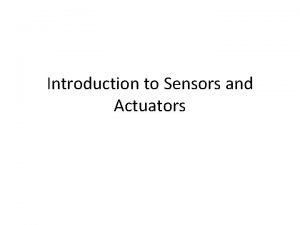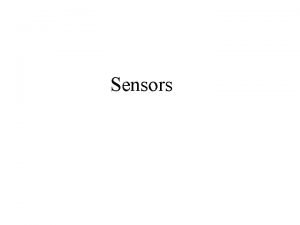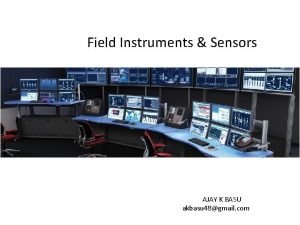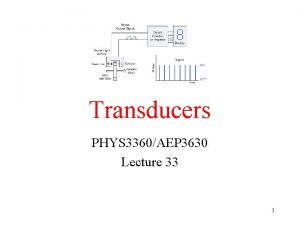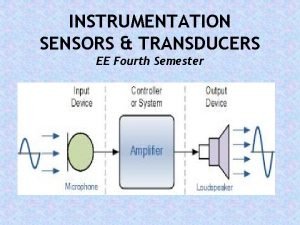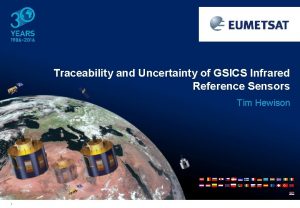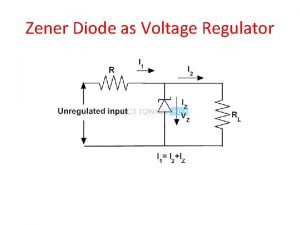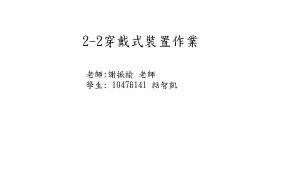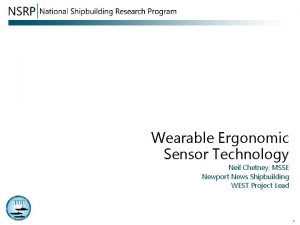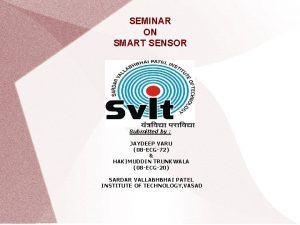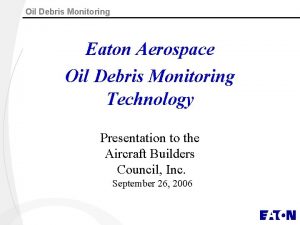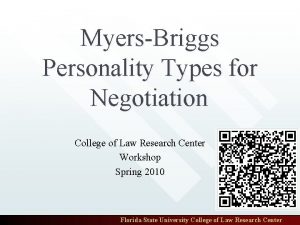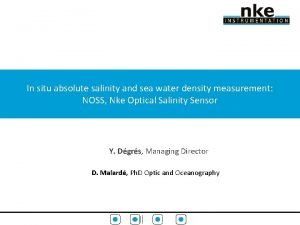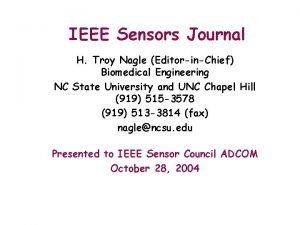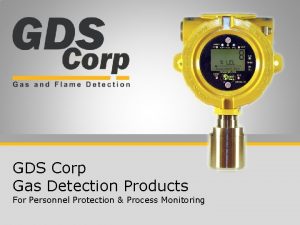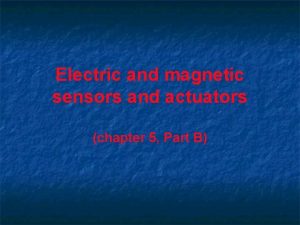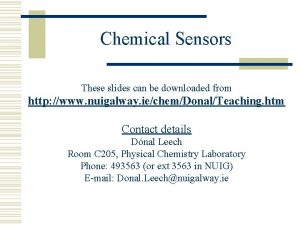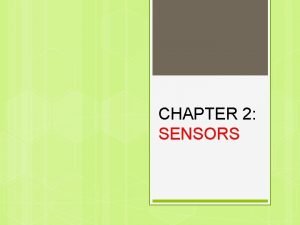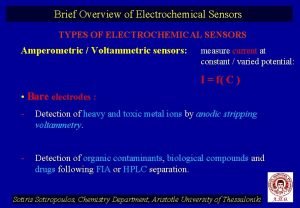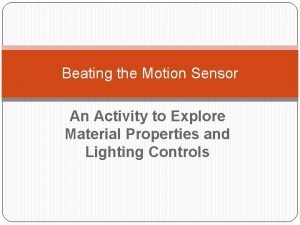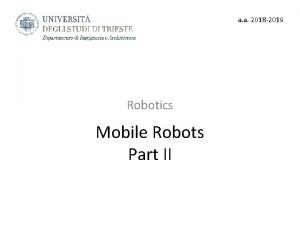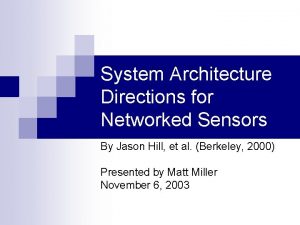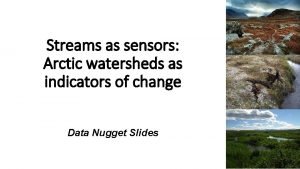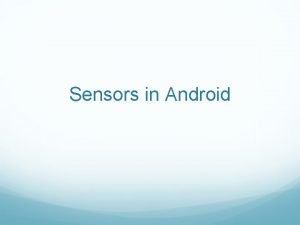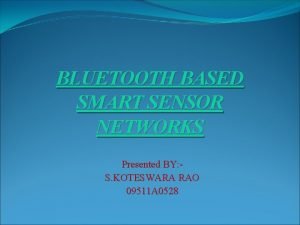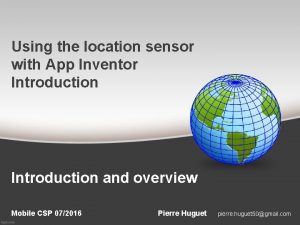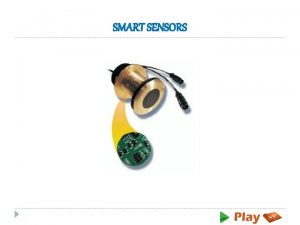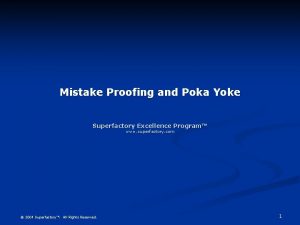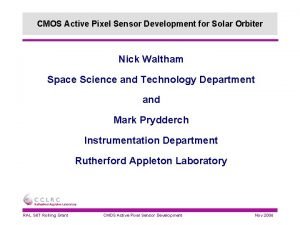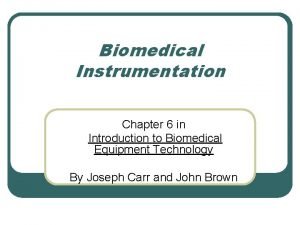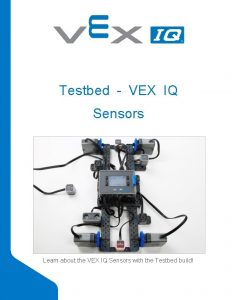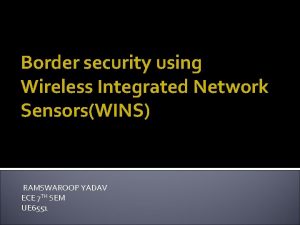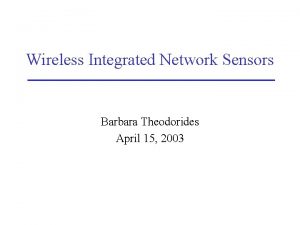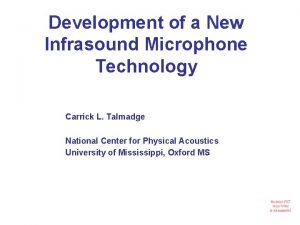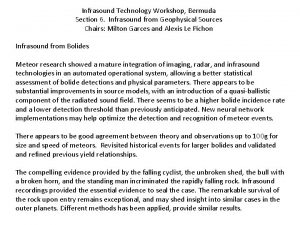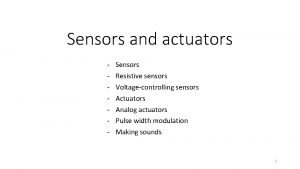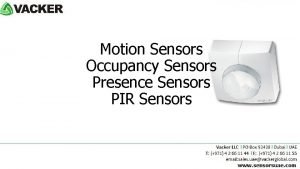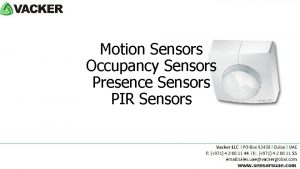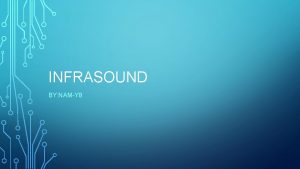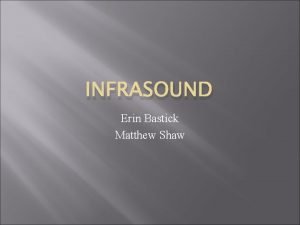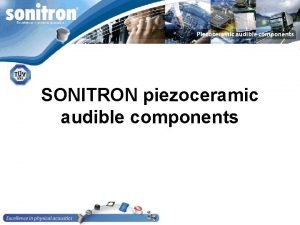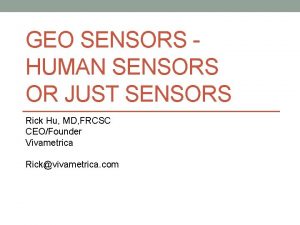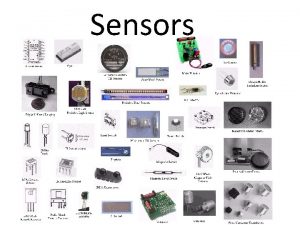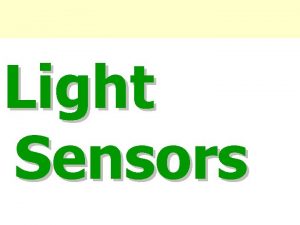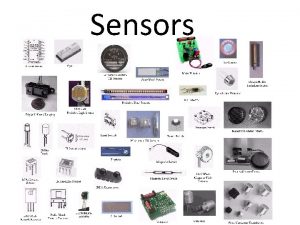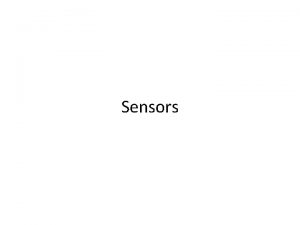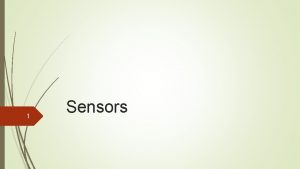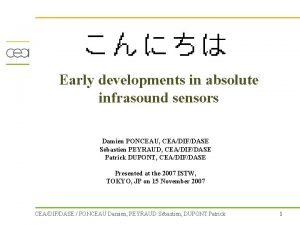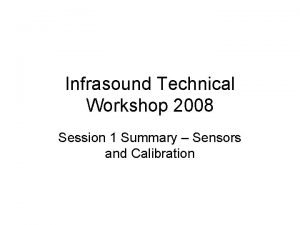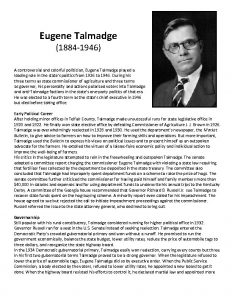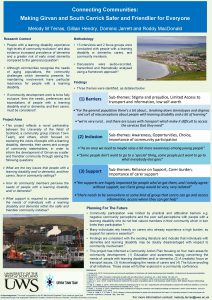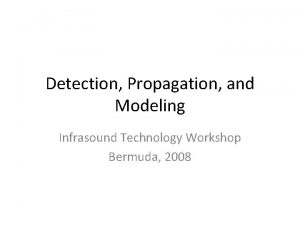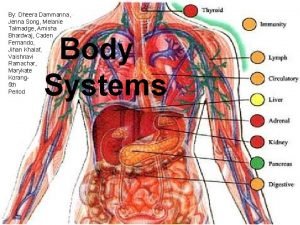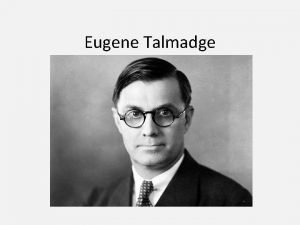Piezoceramic Sensors and Infrasound Technology Carrick L Talmadge







































- Slides: 39

Piezoceramic Sensors and Infrasound Technology Carrick L. Talmadge National Center for Physical Acoustics University of Mississippi, Oxford MS

Potential Applications of Infrasound Sensors • monitoring potential atmospheric nuclear tests (CTBT applications) • natural hazard detection of volcanos, tornados, tsunamis • monitoring natural phenomena such as hurricanes and bolides • Atmospheric science applications such as studying structure of stratosphere, probing physics of the lower thermosphere.

Challenges of Atmospheric Infrasound • Noise associated with atmospheric turbulence (“wind noise”), especially at frequencies below 0. 1 Hz. Conventionally this is solved by adding large “wind-noise filters” to sensors. The cost of the filters typically far exceeds the cost of the infrasound sensor itself. • Environmental exposure is a hazard to current, rather delicate microphones, so vaults are constructed to stablize temperature and protect the instrument from environmental exposure.

Infrasound Pipe Array: State of the Art Wind Noise Sensor

Goals of This Instrument Development • Replace large pipe arrays with array of infrasound sensors. • Ruggedize sensors, and construct them to be insensitive to thermal fluctuates: Removes requirement for instrument vault. • Make them low-cost enough ($750 vs $5000+) to make practicable multiple arrays of sensors. • Low replacement cost also reduces risk associated with damaged or destroyed sensors.

Piezoceramic Sensors • Resonant Frequency - 1. 8 k. Hz (hinged condition) • Sensitivity - 3. 4 m. V/Pa • Temperature Compensation – Reverse bimorphs – Insulated enclosures, small openings • Charge Generating – Must operate into a high impendence

Frequency Response of Piezeoceramic Sensors higher frequencies strongly attenuated, phase becomes incoherent 3 -d. B cut-off for 35 -mm element very flat amplitude/phase response below 500 Hz–ideal for long-distance sensing Band start frequency depends on design of preamplifier. We can reliably measure pressure signals down to periods of 105 s.

Schematic of NCPA Sensors C 50 pincompatible connector This 4 -element design reduces effects of temperature gradients across sensors. Current design has different base plate, sensor lid. Still Chaparral 50 compatible.

Characteristics of Sensor • highly ruggedized • 0. 0005 Hz- 100 Hz operating range (3 -d. B). Can be calibrated to 500 -Hz. • plug compatible with Chaparral 50 • self-calibration using reciprocal calibration method has been demonstrated from 0. 1– 100 Hz, calibration chamber with calibrated volume source. • Sensor can be configured as accelerometer (or dual pressure/acceleration sensor with same sensing elements).

Microphone Noise Floor

Comparison with C 50 Microphone

Single Sensor Comparison with C 50

Single Sensor Comparison

Comparison with Vaisala Pressure Sensor

“High Frequency” Sensor • Allow use of microphone for low-frequency sound, long-range propagation experiments. • 0. 1 Hz- 1000 Hz operating range, configurable gain • Improved vibrational isolation (elevated sensor applications). • More compact sensor packaging. • Vertical (4 -m, 8 -element) portable towers are in development at the NCPA.

Comparison of HF Sensor to B&K 4193


2009 Nevada Field Deployment of Array Nominal array locations were at 180– 250 km, in 10 km steps

Array Geometry • All infrasound microphones were NCPA sensors. • Outer sensors characteristics: 10 m. Hz– 100 Hz, 0. 13 V/Pa; center mike 1 m. Hz– 100 Hz, 0. 025 V/Pa • Digitizers used were Geotech SMART 24 (“even” numbered array”) or Miltech Fence Posts (“odd numbered arrays”).

Field-Deployed Microphone

Sources for Nevada Deployment July 14, 2009 4 ton TNT-eq explosion 4, 20 and 80 tons-TNT equivalent explosions at the Utah Testing and Training Range (UTTR), as part of the Trident missile disposal program.

Source Capture– 23 km South Source capture used 2 co-located microphones 23 -km south of source. Assuming spherical spreading, source strength was about 70 -Pa at 1 kilometer. Source capture used a Chaparral USB Digitizer.

Source Spectral Content “Scalloping” probably associated with multiple arrivals associated with propagation effects.

Vertical Sound Speed Profile

Expected Signal Transmission

Atmospheric Absorption

Typical Arrival Structure

Typical Arrival Structure

Typical Arrival Structure

Typical Arrival Structure

Typical Arrival Structure

Typical Arrival Structure

Typical Arrival Structure

Typical Arrival Structure

Observed Power

Average Noise Floor f– 7/3 f– 1 fc = 20 Hz (wind noise filter)

Seismic Signals Miltech Fence posts had 3 -axis geophones (Geospace GS-32 CT). Arrivals were observed on these sensors coincident with the infrasound sensors.

Frequency Spectrum Peak energy was near 0. 7 Hz High-frequency tail above 20 -Hz was unexpected. However, it was observed at all sites with two different recording systems, and with two different technologies (infrasound mikes, seismometer)

Conclusions • A new sensor technology incorporating piezoceramic sensors has been developed at the NCPA. • This technology was successfully field tested in a large scale deployment in Utah/Nevada from July 13– September 22, 2009. • Very few sensor related problems were encountered during experiment. • Main surprise was observation of high-frequency signals which are probably associated with nonlinear propagation effects at stratospheric elevations.
 Eugene talmadge definition
Eugene talmadge definition Design of mechatronics system ppt
Design of mechatronics system ppt Introduction to sensors and actuators
Introduction to sensors and actuators Sensors and transducers are subsystem of mechatronics.
Sensors and transducers are subsystem of mechatronics. Ajay sensors and instruments
Ajay sensors and instruments Transducers and sensors
Transducers and sensors Transducer
Transducer Fixed automation diagram
Fixed automation diagram Sensors and traceability
Sensors and traceability Static characteristics of sensors
Static characteristics of sensors Wearable inertial sensors
Wearable inertial sensors Ergonomic+sensors
Ergonomic+sensors Smart washroom management system
Smart washroom management system Conclusion of smart sensors
Conclusion of smart sensors Oil debris monitoring
Oil debris monitoring Sensors vs intuitives
Sensors vs intuitives Peas in ai
Peas in ai Water density sensors
Water density sensors Ieee sensors journal impact factor
Ieee sensors journal impact factor Gds sensors
Gds sensors Actuator with hall effect sensors
Actuator with hall effect sensors Chemical sensors ppt
Chemical sensors ppt Sensor definition
Sensor definition Types of electrochemical sensors
Types of electrochemical sensors How to beat motion sensors
How to beat motion sensors Exteroceptive sensors examples
Exteroceptive sensors examples System architecture directions for networked sensors
System architecture directions for networked sensors Data nugget streams as sensors answers
Data nugget streams as sensors answers Motion sensor in android
Motion sensor in android 09511 what network
09511 what network Location sensor mit app inventor
Location sensor mit app inventor Smart sensor definition
Smart sensor definition Robotics merit badge answers
Robotics merit badge answers Poka yoke sensors
Poka yoke sensors Sensor communication style
Sensor communication style Development of solar sensors
Development of solar sensors Microelectrodes in biomedical instrumentation
Microelectrodes in biomedical instrumentation Vex iq sensors
Vex iq sensors Wireless integrated network sensors
Wireless integrated network sensors Wireless integrated network sensors
Wireless integrated network sensors


